
Бесплатный фрагмент - NICE Shopping
A Chic Guide to Mastering French Purchases and Cultural Joie de Vivre
“Dedicated to my mom”
Prologue: The Art of French Shopping — A Journey Beyond the Transaction
The scent of freshly baked pain au chocolat mingles with the tang of salt air as you stroll down Nice’s Cours Saleya at dawn. Stallholders unfurl bolts of Provençal linen, their patterns echoing the azure coastline, while a fromager arranges wheels of Camembert with the precision of a jeweler. This is France, where shopping is not a chore but a ritual — a dance of discernment, patience, and pleasure.
Dedicated to my mother, who loves France, whose first lesson in French elegance was a whisper: “En France, even a grocery list is poetry,” this book is an ode to the moments where commerce and culture entwine. Here, every purchase — a lavender sachet, a vintage Chanel flap, a wedge of chèvre — becomes a portal into centuries of tradition and the quiet rebellion of modernity.
France’s retail landscape is a paradox. Globalization has blurred borders — a “Made in France” tag may conceal a global supply chain — yet the soul of French shopping persists. It’s in the boulangerie who remembers your preference for baguette bien cuite, the perfumer in Grasse who crafts a scent to mirror your essence, and the stoic chic of a Parisian pharmacie, where €8 micellar water sits beside €200 serums. To shop here is to navigate a world where heritage and innovation waltz, often in the same cobblestoned street.
Consider the rhythm of French hours. In Nice, stores shutter for a sieste méridionale, defying the 24/7 grind of global capitalism. Sundays remain sacred to leisure, save for tourist zones where commerce hums discreetly. This is not inefficiency but a philosophy: life, like a good Bordeaux, cannot be rushed. The French refuse to let productivity eclipse pleasure, and in this resistance, they gift us a masterclass in mindfulness.
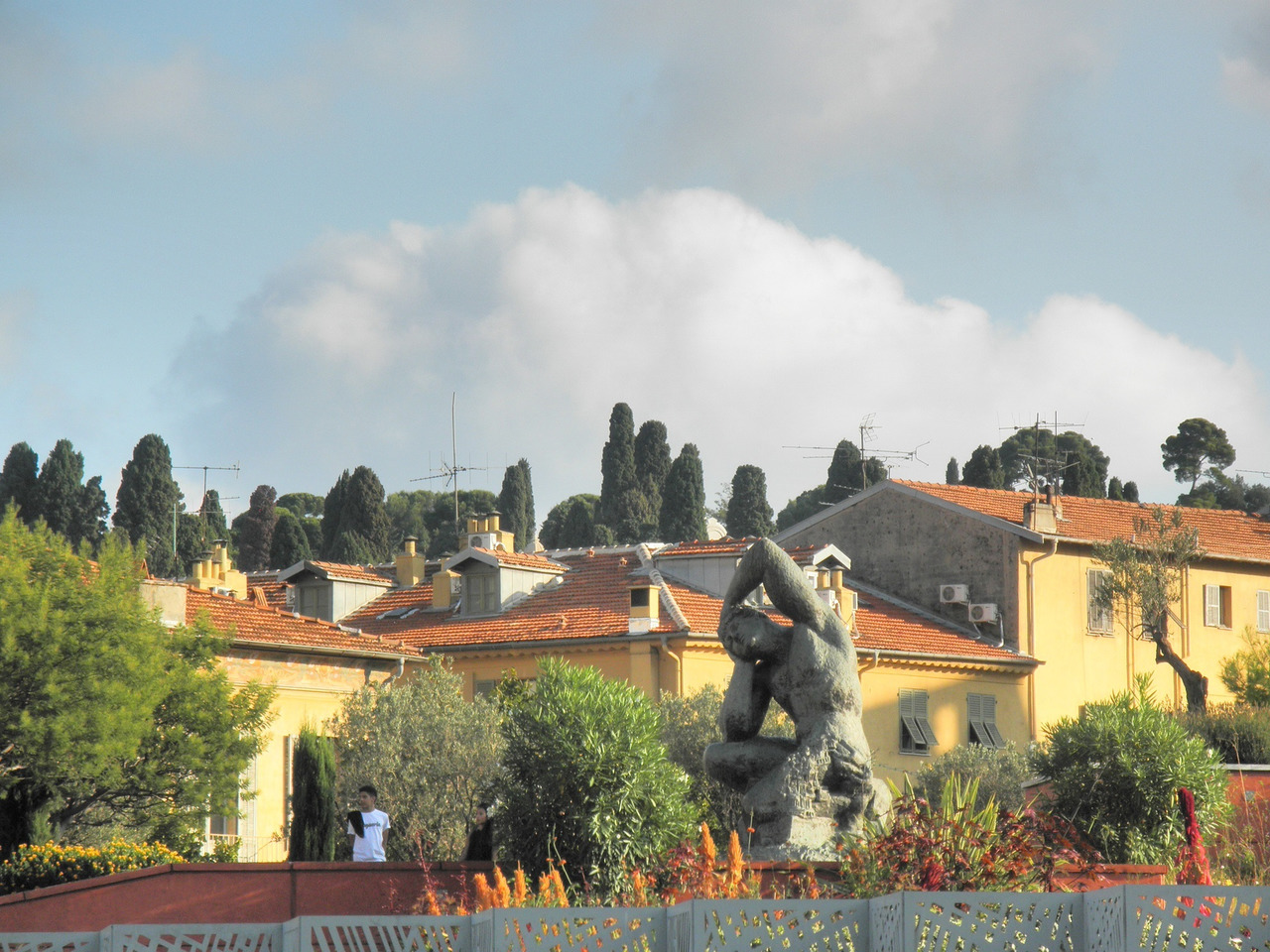
Language is your first ally. A poorly pronounced “Bonjour” might earn you a glacial stare, but a stumbling “Je voudrais essayer ceci, s’il vous plaît” could spark a salesperson’s mentorship. In these exchanges, perfection matters less than respect — the acknowledgment that you’ve stepped into their world, where every interaction begins with civility. We’ll equip you with phrases to charm flea-market vendors and decline upsells with grace, but remember: a smile is universal currency.
Fashion here is a dialect. The Riviera’s uniform of linen and sneakers masks a rigor — no logos, no excess, just a scarf knotted with calculated nonchalance. Yet venture into a dépôt-vente, and you’ll find Frenchwomen debating a €50 Hermès tie or a sequined Chloé blouse with the intensity of art critics. The secret? French style is curation, not consumption. It’s knowing a €20 Monoprix tote can (ou pas?) outclass a logo-laden luxury bag, and that true luxury lies in a €700 bespoke lingerie set, stitched in a Parisian atelier untouched by time.
As you turn these pages, you’ll learn to see beyond the postcard clichés. Yes, buy the macarons and the savon de Marseille, but also the Le Creuset pot that will simmer stews for decades, the Fragonard perfume crafted for a flower that blooms once a year, and the used paperback from Shakespeare & Company, its margins scribbled with a stranger’s dreams. This is shopping as archaeology — unearthing stories, not stuff.
So breathe deeply. Let the café crème steam your cheeks, let the marché’s cacophony be your symphony, and let this book be your compass. France awaits, bien sûr, but more importantly, it invites — to linger, to learn, and to fall in love with the art of living, one perfectly imperfect purchase at a time.
Sales & Discounts
Each year, the impact of winter and summer sales on retail shopping becomes less noticeable than in previous decades. This is largely due to the rise of online shopping. To keep up with e-commerce, brick-and-mortar stores now offer discounts and sales throughout the year, even during off-seasons. However, supply often exceeds demand, leading to even more frequent discounts.
During the official winter and summer sales, items (mostly leftover stock from previous seasons) sell out quickly. However, the selection isn’t always impressive. Interestingly, many mid-season promotions by major retailers offer even steeper discounts and a broader selection than the official winter and summer sales. So, if you visit outside the main sale periods, don’t worry — you might just score even better shopping deals during one of these off-season promotions.
During the most recent winter sale, the average French shopper spent €197, with 70% of purchases being clothing and footwear.

To buy and be fashionable
French Elegance and Modern Realities: A Traveler’s Guide to Savvy Shopping and Local Rhythms
French goods are celebrated worldwide for their timeless quality and sophisticated allure. While this reputation remains legendary, it’s worth noting that globalization has reshaped production landscapes. Many items that were once exclusively crafted in France are now produced globally, which sometimes alters their traditional perception. Even some traditional culinary delicacies, deeply rooted in French terroir, are now produced beyond France’s borders — a nuance for discerning travelers to consider.
Mastering the Art of French Shopping Hours
France’s labor laws prioritize work-life balance, offering citizens shorter workweeks, extended vacations. A charming quirk of French culture? The longstanding ban on Sunday shopping, relaxed only recently in tourist-heavy areas. Yet even on Nice’s bustling Avenue Jean Médecin, major stores shutter by 1 PM on Sundays, reflecting a relaxed pace locals cherish.
The French Riviera is the most touristic region of France, after Paris.
Most shops open between 9–10 AM, closing around 7 PM, with summer hours occasionally stretching later. Note that smaller boutiques, post offices, and banks often take a leisurely midday break (12–2 PM), while specialized shops — think jewelers or philatelist havens — embrace a “southern siesta” vibe, closing from noon until 4 PM. Unlike cities with round-the-clock convenience stores, Nice moves at a leisurely pace, encouraging visitors to slow down and savor the experience.
Dining Like a Local (or a Global Nomad)
In much of France, life revolves around strict meal times, but Nice’s international flair keeps its restaurants open all day — a rarity! Traditional French families usually dine around 6:30–8:00 PM, and many eateries wind down by 10 PM, though tourist-packed August and New Year’s Eve spark extended hours.
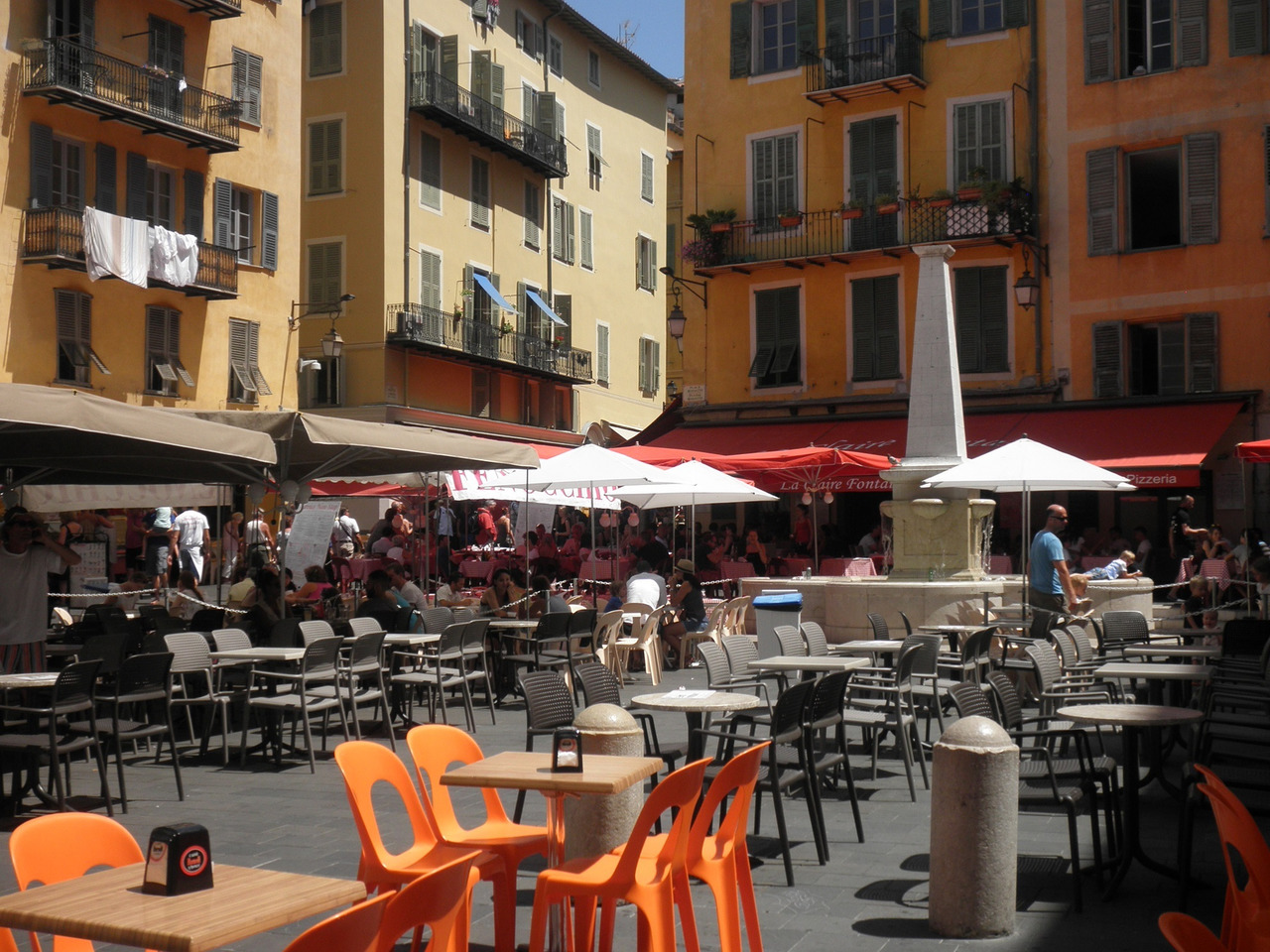
Pro Tips for Seamless Exploring
Closures: Some shops close Mondays (but open Sundays) or Wednesdays, when schools are out and families prioritize quality time.
Seasonal Shifts: Museums, tour agencies, and shops adjust hours between summer and winter — always check ahead!
Embrace the Pace: France’s dedication to leisure isn’t inefficiency; it’s a philosophy. Adjusting to local rhythms isn’t just practical — it’s a window into the art of joie de vivre.
Even if with the advent of new tourist-friendly rules, laws have been introduced allowing shops to operate on weekends, they still traditionally prefer to remain closed.
By understanding these nuances, travelers can navigate France’s enchanting blend of tradition and modernity with grace, ensuring every croissant, museum visit, and sunset stroll along the Promenade des Anglais feels authentically — and unforgettably — French.
Greeting Service
When “Bonjour” becomes “hey there.” In bustling tourist areas, the charming word “Bonjour” gets stripped down to a casual “hi” thanks to its relentless commercial use. You’ll hear it echoing down every tourist-packed street. At first, you might even turn around — which is exactly the reaction this attention-grabbing gimmick aims to provoke. Shopkeepers, restaurant owners, and staff use it to reel you in, hoping to steer you specifically into their boutique or café.
Some waiters, with a touch of theatrical flair, have mastered the art of an attention-grabbing greeting. They’ll belt out the word as if they’ve just spotted a long-lost friend, radiating exaggerated delight. But look closer, and you’ll notice the “heartfelt” tone is just polished repetition. They’ll toss out that magnetic “Bonjour” without even glancing to see who’s walking by — a well-rehearsed act, honed to hook passersby.
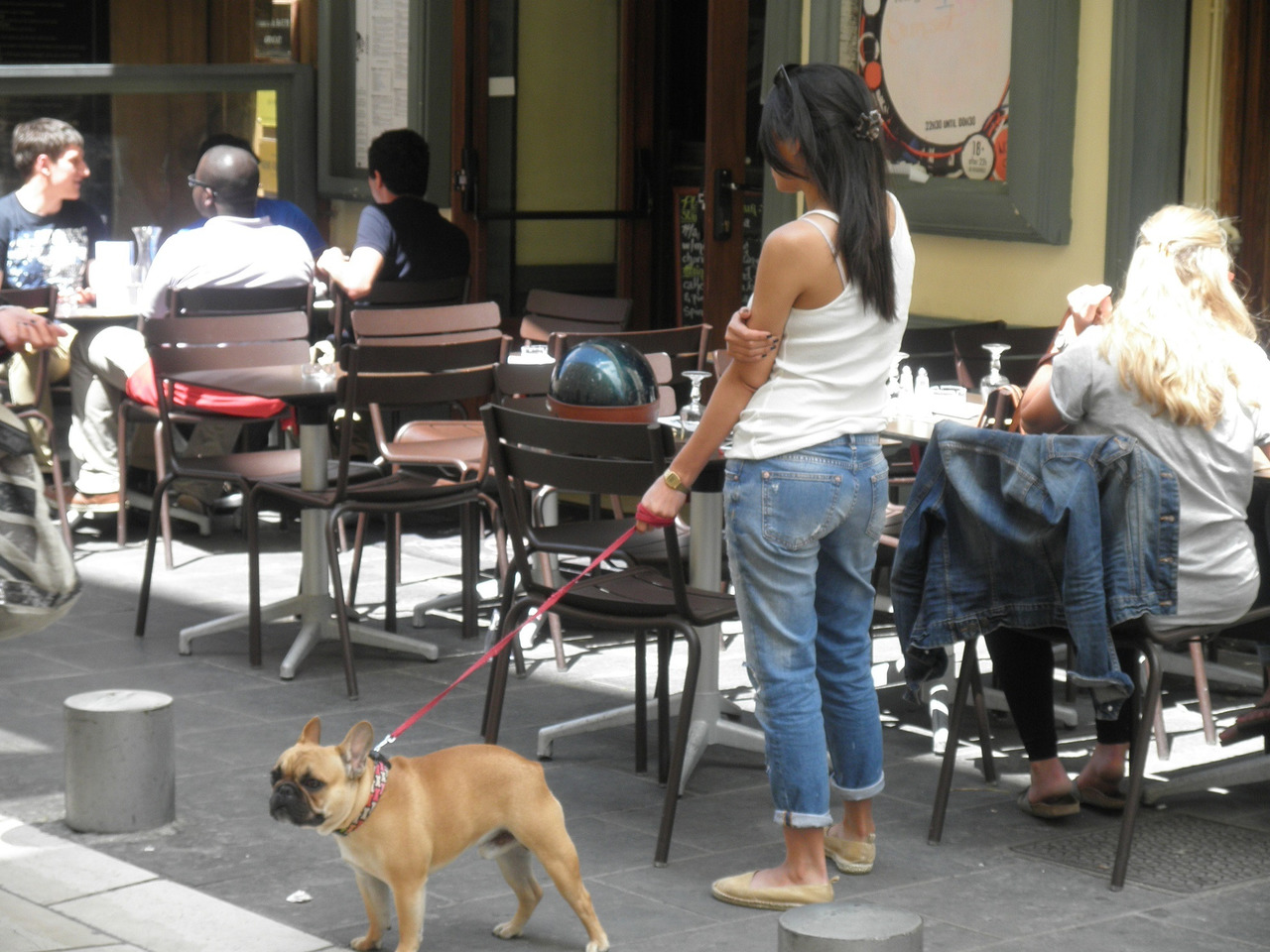
Mastering the Language of French Shopping
Navigating French boutiques and markets is as much about linguistic finesse as it is about style. This chapter equips you with essential phrases in American English and French, paired with cultural insights to elevate your shopping experience from transactional to transcendent.
Negotiating Prices & Discounts
English: “Is this your best price?” / “Are there any promotions available?”
French: “C’est le dernier prix?” / “Y a-t-il des réductions?”
Context: Use the latter at Parisian flea markets (marchés aux puces). For example: “C’est le dernier prix pour ce vase ancien?” (“Is this your final price for this antique vase?”).
Seeking Gifts or Specific Items
English: “I’m searching for a gift — something uniquely French.” / “Could you direct me to the perfume section?”
French: “Je cherche un cadeau… quelque chose de typiquement français.” / “Où puis-je trouver les parfums?”
Cultural Tip: Pair requests with “S’il vous plaît” (please) and a smile. The French value politeness as much as precision.
Fitting Rooms & Sizing
English: “May I try this on?” / “Do you carry this in a U.S. size 8?”
French: “Puis-je essayer ceci?” / “Avez-vous ceci en taille 38?”
Note: French sizes follow European numbering (e.g., 36=US 6, 38=US 8). If uncertain, ask: “Pourriez-vous m’aider avec les tailles?” (“Could you assist with sizing?”).
Payment & Returns
English: “Do you accept Visa/Mastercard?” / “What’s your policy on returns?”
French: “Acceptez-vous les cartes Visa/Mastercard?” / “Quelle est votre politique de retour?”
Pro Tip: Always keep your receipt (un reçu) — most stores require it for returns.
Politeness as an Art Form
English: “Thank you — I’m just browsing for now.”
French: “Merci, je regarde pour le moment.”
English: “This is exquisite — I’ll take it!”
French: “C’est parfait, je le prends!”
Cultural Nuances to Embrace
Bargaining: Reserved for open-air markets (marchés), not boutiques. A playful “Vous pouvez faire mieux?” (“Can you do better?”) works wonders at stalls.
Greetings Matter: Begin interactions with “Bonjour, Madame/Monsieur” — skipping this is like entering a New York gallery without acknowledging the curator.
Key Terms for the Discerning Shopper
Les Soldes: Biannual sales (January/July) — a national event.
La Carte Bancaire: Credit/debit cards are widely accepted, but carry €20—50 cash for smaller vendors.
La Cabine d’Essayage: Ask “Où est la cabine d’essayage?” if the fitting room isn’t visible.
Closing Reflection: The Joy of Connection
Speaking even fragmented French demonstrates respect for the culture and transforms transactions into moments of connection. Whether you’re admiring a chocolatier’s craft in Saint-Germain or haggling for lavender sachets in Provence, these phrases are your keys to unlocking the savoir-faire of French shopping.
Bonne chance et bon shopping! May your linguistic efforts be rewarded with silk scarves, vintage wines, and the quiet thrill of having navigated France with a joy of knowledge.
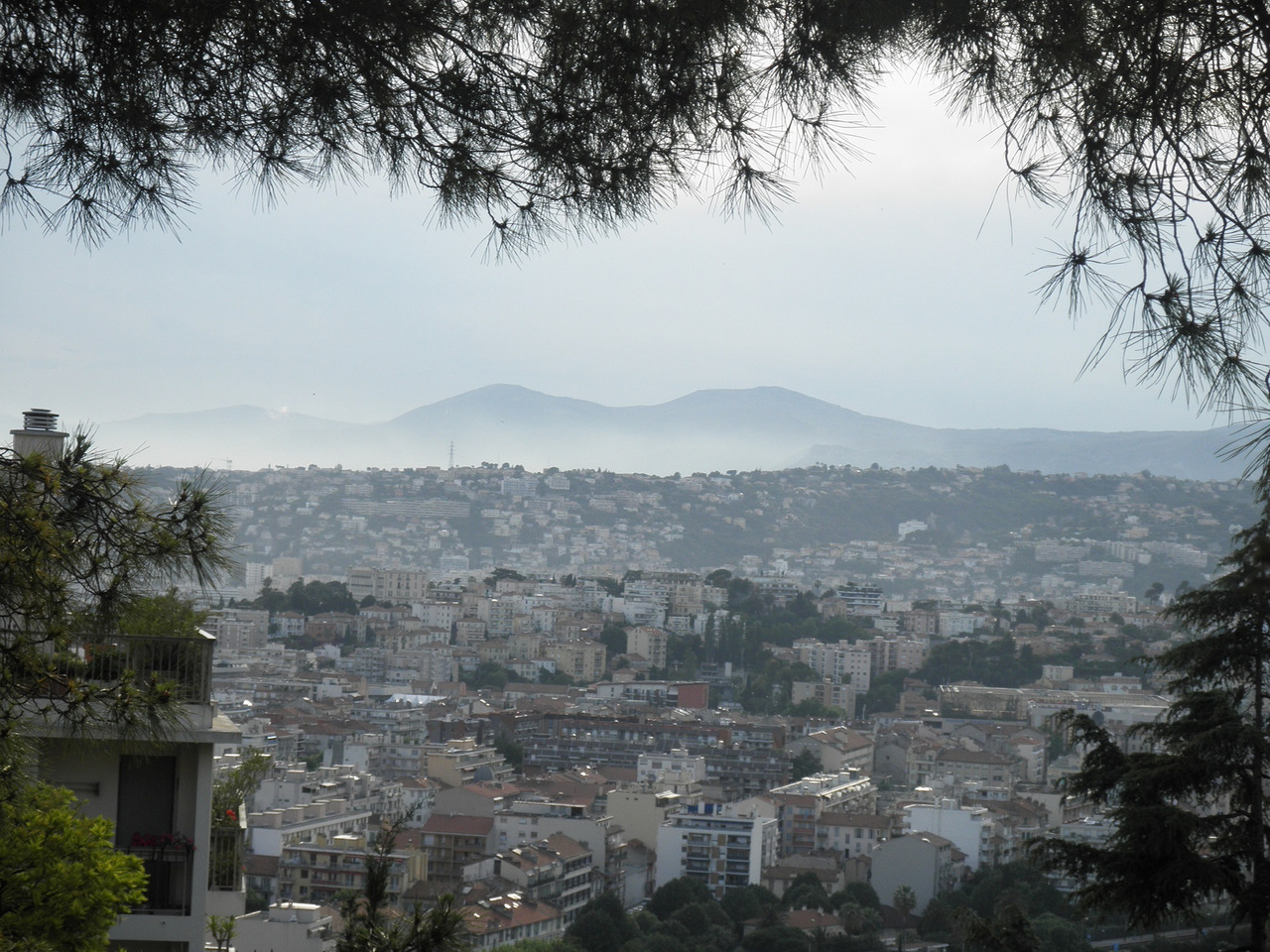
Insiders tips for shopping tour in France
With these insider tips, your shopping tour in France will be effortless, enjoyable, and budget-friendly.
Before You Go
Avoid peak tourist seasons — The best times for sales are winter (January – February) and summer (June – July), but try to shop on weekdays to avoid crowds.
Know about VAT refunds — Non-EU residents can get up to 12% VAT back on purchases over €100.01. Ask for a “Tax Refund” receipt at checkout.
Learn a few key phrases — Saying “Bonjour” (hello) when entering and “Merci” (thank you) when leaving a store is essential. Also, “Combien ça coûte?” (How much does it cost?) and “Avez-vous une autre taille?” (Do you have another size?) might come in handy.
Use shopping apps — Apps like LeBonCoin, Vinted, and TheFork help you find deals on fashion and dining.
Set a budget — Luxury boutiques don’t always display prices in the window, so be prepared for surprises.
While Shopping
Visit outlet villages — Places like La Vallée Village near Paris or McArthurGlen in Troyes or The Mall Sanremo
In Italy; not far from Nice, France offer designer brands at discounted prices.
Check out thrift stores & concept shops — Kilo Shop, Free’P'Star, and Merci in Paris are great for unique vintage finds.
Be wary of tourist traps — Shopping in ultra-touristy areas like the Champs-Élysées often means inflated prices.
Ask for complimentary gift wrapping — Many luxury stores offer elegant wrapping for free.
Be polite to salespeople — A simple “Bonjour” and “Merci” will go a long way in getting good service.
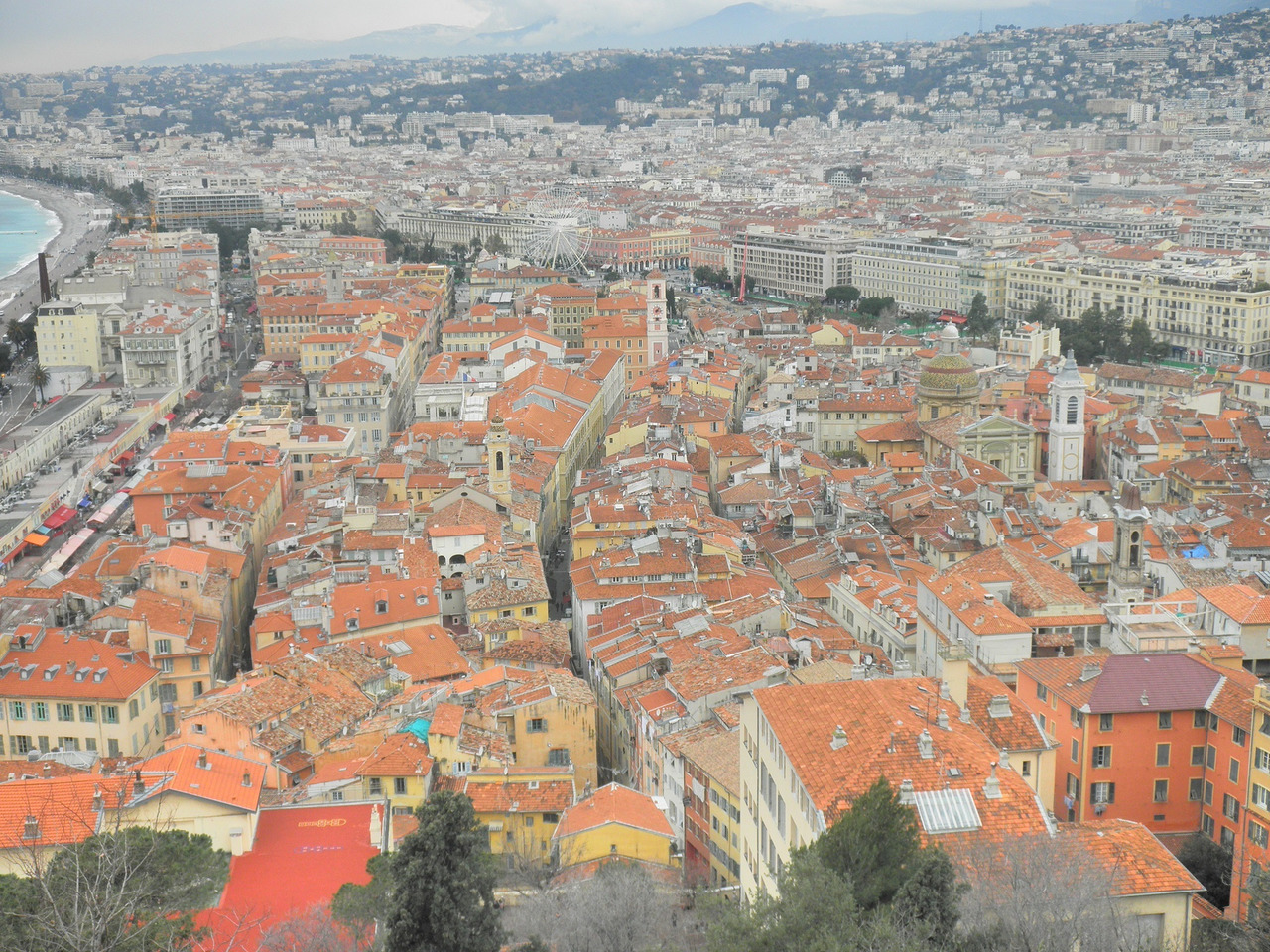
Saving Money
Sign up for store loyalty programs — Even as a visitor, you can get discounts at places like Galeries Lafayette.
Look out for “private sales” — Many brands offer pre-sale discounts before the official sales period.
Check “prix ronds” deals — Some stores have special sections with fixed-price items (e.g., €10, €20), which are often great deals.
Pay in cash when possible — Some shops may offer small discounts if you avoid foreign card fees.
After Your Shopping Trip
Keep your receipts for VAT refunds — Present them at the airport (along with your purchases) to claim your tax refund.
Check customs regulations — Some products (wine, luxury goods, specialty foods) have export limits, so verify before packing.
Request a refund if needed — In France, online purchases usually have a 14-day return policy by law.
Ship your purchases home — Some boutiques offer international shipping services to save you the hassle of carrying bulky items.
Shopping and the Art of Living on the French Riviera
Curated Treasures from Musée Matisse to Fondation Maeght The French Riviera, a sun-drenched cradle of artistic genius and joie de vivre, offers more than azure waters and glamorous promenades. Here, where the light inspired Matisse and Chagall, and where modernism found its muse in the Mediterranean, shopping transcends mere commerce. It becomes a dialogue with history, a tactile extension of the art that saturates the region. Nowhere is this symbiosis more elegantly realized than in the museum boutiques of the Riviera’s cultural temples — spaces where visitors can carry home not just souvenirs, but fragments of a luminous creative legacy.
Musée Matisse, Nice: Where Color Becomes Keepsake
Nestled in the olive-groved hills of Cimiez, the Musée Matisse is a sanctuary of the artist’s vibrant world. Its boutique, however, is no mere afterthought. Like Matisse’s cut-outs, the shop is a curated explosion of form and hue. Here, visitors discover reproductions of the artist’s iconic Blue Nudes and La Danse transformed into silk scarves, their fluid lines mirroring the drape of Riviera linen. Art books, printed with the museum’s archival precision, sit beside ceramic tableware glazed in the same cobalt and vermillion that electrified Matisse’s Nice-period canvases.
But the true gems are the limited-edition lithographs, produced in collaboration with local printmakers. These works, though accessible, retain the urgency of Matisse’s hand — a democratization of genius that would have pleased the artist himself. As you select a catalog or a postcard, note how the staff — often art historians or practicing artists — speak of Matisse’s connection to Nice’s light. Their insights, offered with Gallic passion, deepen the act of purchase into an act of preservation.
Fondation Maeght, Saint-Paul-de-Vence: A Modernist Pilgrimage
Perched above Saint-Paul-de-Vence, the Fondation Maeght is a pilgrimage site for lovers of 20th-century art. The museum’s shop, designed with the same lyrical modernism as its Calder mobiles and Miró labyrinths, is a treasure trove of objects that blur the line between utility and sculpture.
Here, you’ll find Giacometti-inspired bronze bookends, their elongated forms echoing the artist’s existential Walking Man. Textiles screen-printed with Braque’s avian motifs invite you to drape your home in poetry. For the discerning collector, the Fondation offers signed catalogs from past exhibitions — many now out of print — alongside jewelry crafted by local artisans who’ve reinterpreted Kandinsky’s geometric abstractions in gold and enamel.
Don’t overlook the children’s section: a whimsical array of puzzles and mobiles that introduce young minds to Miró’s playful surrealism. It’s a reminder that French culture venerates art not as a relic, but as a living language to be inherited.
Musée National Fernand Léger, Biot: Industrial Poetry in Miniature
Lesser-known but no less captivating, the boutique at Biot’s Fernand Léger Museum celebrates the artist’s machine-age romanticism. Think bold, graphic dishware patterned with Léger’s tubular forms, or tote bags emblazoned with his murals of cyclists and acrobats. The shop’s pièce de résistance? Miniature replicas of Léger’s stained-glass works, crafted by Biot’s master glassblowers — a fusion of industrial aesthetic and artisanal tradition.
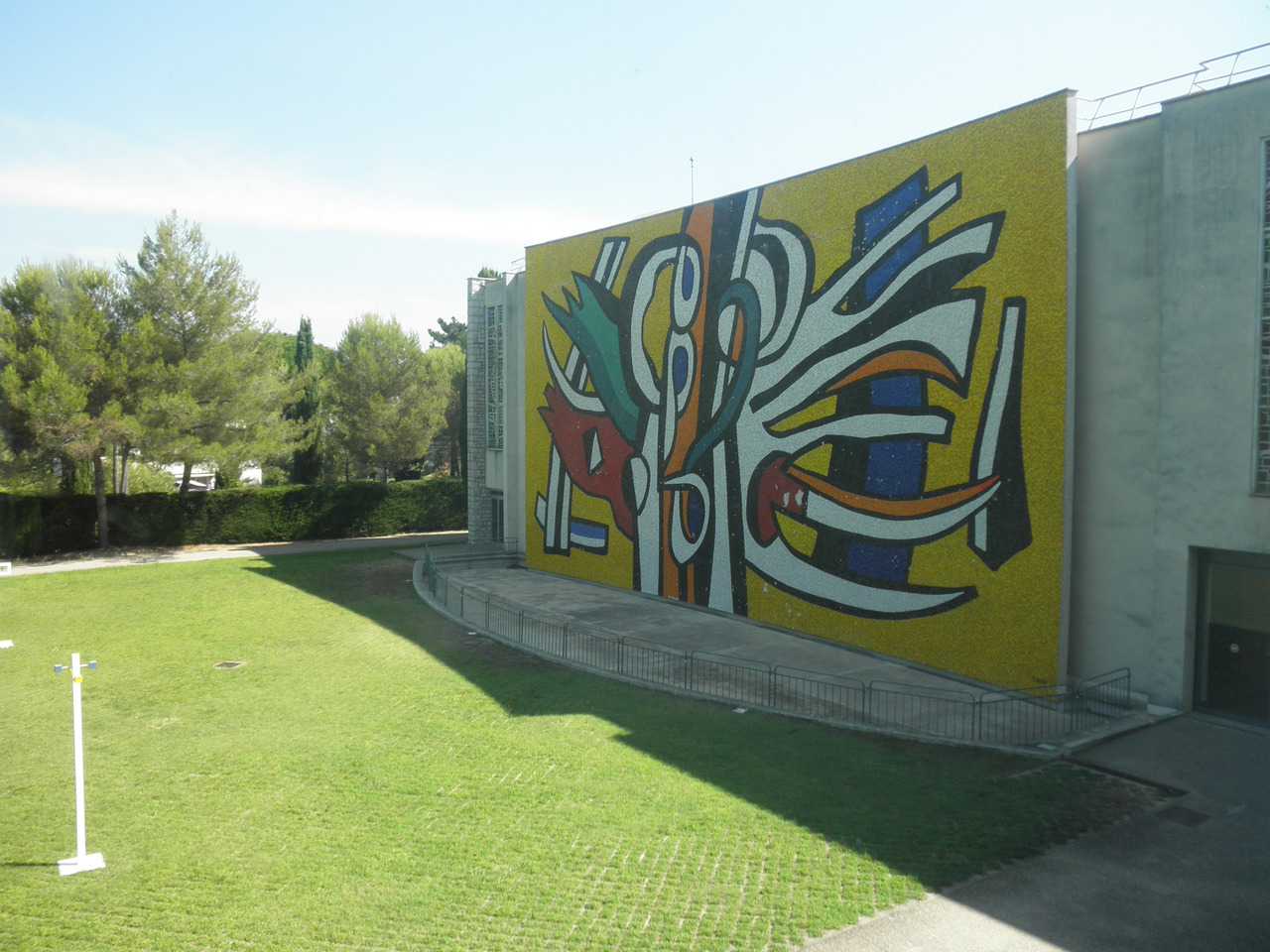
Why These Spaces Matter: Beyond the Transaction
Shopping at these boutiques means engaging in a centuries-old French tradition — one where beauty is meant to be lived with, not merely admired from a distance. Each purchase sustains the museums’ missions, ensuring that Calder’s mobiles continue to sway and Matisse’s gardens remain pruned for future pilgrims. Moreover, these objects — imbued with the spirit of their origins — transform homes into extensions of the Riviera’s creative soil.
As you exit Fondation Maeght, a paper bag in hand and Chagall’s cobalt skies overhead, you’ll grasp the deeper alchemy of Riviera shopping: here, even commerce is elevated to art.
Tip for the Discerning Traveler: Many museum boutiques offer exclusive items unavailable online. Inquire about seasonal collaborations — often, summer brings partnerships with perfumers or chocolatiers, creating sensorial homages to the art within.
Online Shopping
Online stores — whether extensions of physical shops or purely digital retailers — also hold sales. Similar to physical stores, online retailers also offer discounts, and returns are often available.
However, shopping online from France and shipping directly to your contry can be costly due to high postage fees, customs duties, and the risk of lost or stolen packages. A more practical approach is to order items online before your trip and have them delivered to Nice /point of relay or your hotel address/, using your bank card for payment. If something doesn’t fit or isn’t to your liking, you can return it from Nice /during your stay/, and the refund will be credited back to the same card used for the purchase. I’ve personally gone through this process — both purchasing and returning an item — and everything worked smoothly.
For delivery, you can use your hotel’s address or opt for a growing trend — secure “pick-up lockers” provided by online retailers, often conveniently located at train stations.
That said, it’s important to stay cautious. There have been reports in the media about online stores falsely advertising discounts, where the so-called “sale price” was actually higher than what the item cost in regular stores.
Virtual Security
As in any country, fraud and theft are present in France, making vigilance essential. Insurance — whether for your home, bank account, or valuables — is meant to help recover losses. However, even if you’re insured, one of the main conditions for reimbursement is that you must not have been careless or negligent with your insured property. In other words, staying vigilant is crucial. Here are some key recommendations:
Limit personal information on social media. Avoid posting your home address, date of birth, phone number, vacation plans, or any details indicating when your home will be unoccupied.
Use multiple passwords. Cybersecurity experts strongly advise having different passwords for different online activities: a complex one for banking and financial transactions, another for email communication, and a third for less critical tasks like signing up for newsletters.
Maintain three separate email addresses:
One for financial matters, taxes, and official documents.
Another for everyday personal correspondence.
A third for store promotions, surveys, and marketing subscriptions.
This approach minimizes the impact of hacking or phishing attacks.
Use antivirus protection. Use reliable antivirus software. In my experience, Kaspersky offers exceptional speed, efficiency, and reliability, though there are other reputable options as well.
Be skeptical. If you receive a message claiming a friend or relative is in trouble and urgently needs money, or if a bank, tax office, store, doctor, or professor requests sensitive information, always verify the source before taking action. Never hesitate to double-check if the request is legitimate or just another scam.
Fashion as a Stroke of Luck
Finding beautiful, high-quality clothing and shoes in French stores is a stroke of luck — and a time-consuming process. Step into a clothing boutique, and aside from price tags and the sound of French chatter, nothing will immediately reveal your location. The color palettes, textures, fabrics, and silhouettes seem straight out of my grandmother’s youthful wardrobe, yet their quality falls noticeably short of true vintage pieces.
The dominant hue in French fashion? Somber black. Frenchwomen have a well-documented love for wearing black. It reigns in everyday outfits, formal gowns, and everything in between. If several women show up to your wedding in black dresses, don’t take offense — they’ve likely chosen their most elegant and cherished attire. Black is worn to funerals, weddings, joyous celebrations, and official events alike. Glance at a crowd on a central street outside tourist season, and you’ll see a sea of black, punctuated only rarely by pops of light tones in clothing or hair.
This lack of color in stores starkly contrasts with the French obsession with poetic color names in everyday language. Basic colors are never just “green” — they’re “spring green,” “late spring green,” “emerald,” or “azure” (like the coastline!). Speaking of which: Our seas are “White” and “Black,” but the French coast isn’t “Blue” or “Navy” — it’s the Côte d’Azur (Azure Coast)!
A pinnacle of refined taste is coquelicot (‘poppy red’), a color that leans more orange than red and is often associated with nostalgia and classic French aesthetics. Bourgeois French families have clung to this color with a sentimental, multi-generational adoration. It’s a cultural quirk — like much of French fashion — that leaves outsiders both puzzled and intrigued.
What’s in the Stores (and on the Streets)
Mass-market clothing and footwear in French stores can be surprisingly underwhelming. Luxury boutiques, while sophisticated, often showcase designs that may not appeal to all tastes. Many visitors, lured by France’s reputation for romance and beauty, arrive hoping to buy a piece of that charm — only to find garments made in China or other Asian countries. Synthetic fabrics, outdated patterns, and lackluster designs dominate. Even local shoppers seem underwhelmed: they’ll haul armfuls of clothes to the fitting room, only to leave with one or two items at best. Sizes vary wildly, too, shifting not just between brands but even between cuts and countries of origin.
French lingerie? Surprisingly disappointing
For all its glamorous portrayals in books and films, today’s reality is far from luxurious. Department stores like Galeries Lafayette — beloved by tourists — dedicate entire floors to bras and underwear, priced from €15 to €200. While the colors and fabrics look enticing, most are cheaply made in China. The exception? A handful of historic Parisian ateliers still craft custom lingerie by hand — but a bespoke set will set you back €700.
French fashion retailers overwhelmingly cater to older demographics. Stores stock styles and colors designed to appeal to mature women, which explains why so much of the clothing feels like “something from our grandmothers’ closets” (unless you’re browsing teen sections). Yet age here is no barrier to boldness. A 70-year-old might rock a neon crop top from the juniors’ aisle, and locals won’t bat an eye. It’s not uncommon to spot two people wearing identical outfits on the street — despite a 50-year age gap.
Unlike in most other countries, where youth drive spending, France’s purchasing power lies with its older generations. “Older” is relative, though: retirees here start at 62, and they shop actively well into their 90s. Meanwhile, a 39-year-old like President Macron still faces criticism for being “too young” and “inexperienced.”
Occasionally, the streets burst into color with elegantly dressed Black women wearing traditional African attire or styles inspired by France’s overseas territories: vibrant fabrics draped into turbans, billowing skirts, and floor-length wraps — a breathtaking contrast to the sea of black. These outfits, rich in color and craftsmanship, remind you that true French style often thrives outside the stores.
Shoes: Made to Last or Just for Show?
Out of a thousand options, you might find a few decent pairs — like Rieker, the comfortable German brand. But don’t be fooled: even if they’re stylish and cozy, they’re not exactly durable. If they survive a single season, consider it a win.
Credit where it’s due: U.S. stores may also stock imported goods, but they often offer better quality at lower prices than Europe. Case in point: my $20 American boots have weathered five Russian winters and still look new. Good luck finding that level of longevity in French-made purchases!
For clothing and shoe prices, shopping in France requires a cost-benefit analysis. Some items might be worth it — if you love them, they’ll last.
Pro tip: Look for the tax-free sign at stores. Spend at least €175 in one day at a single shop (with your passport handy), and you can claim a VAT refund. Just don’t unseal your purchase until you’re home — it’s part of the deal.
Rainy Days on the Côte d’Azur
Forget tarpaulin boots being just for the army and mud roads. Nice’s downpours are no joke — a 10-minute walk in the rain soaks everything. You won’t melt, but good luck enjoying your day in soggy clothes.
Бесплатный фрагмент закончился.
Купите книгу, чтобы продолжить чтение.